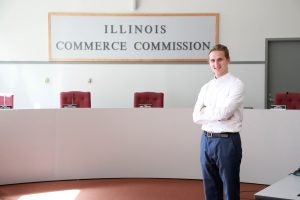Ready to jumpstart your company’s chemical policy?
By Alissa Sasso
 We’ve previously introduced our readers to the Chemical Footprint Project (CFP), a benchmarking survey that evaluates companies’ chemicals management practices and recognizes leaders. The CFP recently released a Model Chemicals Policy for Brands and Manufacturers, a template to help companies develop and share their chemicals policies. A chemicals policy institutionalizes a company’s commitment to safer chemicals and ensures understanding of these goals among all levels of their business, including the supply chain.
We’ve previously introduced our readers to the Chemical Footprint Project (CFP), a benchmarking survey that evaluates companies’ chemicals management practices and recognizes leaders. The CFP recently released a Model Chemicals Policy for Brands and Manufacturers, a template to help companies develop and share their chemicals policies. A chemicals policy institutionalizes a company’s commitment to safer chemicals and ensures understanding of these goals among all levels of their business, including the supply chain.
New resource from @BizNGO and @EDFBiz can help you jumpstart your chemicals policy
Click To Tweet
The CFP Model Chemicals Policy builds directly from EDF’s own Model Chemicals Policy for Retailers of Formulated Products. This alignment is important, demonstrating a consistent library of resources for companies to use as they strive to create safer products and supply chains.
The CFP Model Chemicals Policy was developed by the BizNGO Chemical Working Group (in which EDF is an active participant). The policy includes the 4 key components that EDF thinks are important for a successful chemicals policy:
- Improving Supply Chain Transparency
- Cultivating Informed Consumers
- Embedding Safer Product Design, and
- Showing Public Commitment
 The CFP Model Policy is intended for brands and manufacturers of formulated products and articles (i.e., hard products, like furniture), meaning it can be used by any business sector. Embedded in the policy template are guidance and specific examples of how other companies have crafted elements of their own policies. The CFP Model Policy also aligns directly with questions in the CFP survey, making it easier for those companies who have participated in the survey to take their chemicals management commitments public in a meaningful way.
The CFP Model Policy is intended for brands and manufacturers of formulated products and articles (i.e., hard products, like furniture), meaning it can be used by any business sector. Embedded in the policy template are guidance and specific examples of how other companies have crafted elements of their own policies. The CFP Model Policy also aligns directly with questions in the CFP survey, making it easier for those companies who have participated in the survey to take their chemicals management commitments public in a meaningful way.
The CFP Model Policy will help brands and manufacturers take an important next step in showing their consumers that they are committed to using safer chemicals in their products and supply chain. EDF is pleased to see a new resource that builds consensus for how a company can meaningfully share their safer chemicals journey with the public.
New model policy will help brands to demonstrate commitment to safer chemicals
Click To Tweet
For additional information, please see our additional resources:
- EDF’s Model Food Additives Policy for Retailers/ Grocers
- EDF’s blog reviewing Walmart’s latest commitments, including becoming the first retailer to participate in the Chemical Footprint Project annual survey




 By Tyler Fitch, 2017 EDF Climate Corps Fellow
By Tyler Fitch, 2017 EDF Climate Corps Fellow From policy to action
From policy to action

